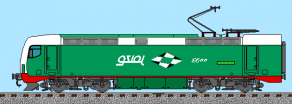IB Turkestan
Getting Around: Local Transportation
Turkestan's public transport networks within its cities are for the most part very good, and it is possible to get almost anywhere in the city using one or other of the various means of public transport. Hiring a car is also possible, but Turkestanis of nomadic background, especially Turcomans, have a reputation as terrible drivers, and local wit suggests that only a fool would willingly drive into the centre of town.
Public transport networks within each city tend to fall mostly under the umbrella of a single operating agency. In Turkestan, these networks are called HOPs, for "Halıq Oyış Panarısı" ("People Moving System"), after the name of the oldest public transport system in Turkestan, HOP Buxara.
Types of Public Transport:
Buses

Articulated bus of HOP Buxara
Buses are the most congestion-prone and most polluting of the various systems of mass transit; they are also by far the cheapest, and require no additional infrastructure in terms of rails, dedicated lanes, overhead power cables or the like.
Every city, town or large village will have at least a bus service operating, and though in the cities and larger towns this is only one of a handful of options, the buses usually have the most extensive network.
In the largest cities, some particularly well-travelled routes employ articulated buses like the one shown, alongside more regular bus types.
Every city, town or large village will have at least a bus service operating, and though in the cities and larger towns this is only one of a handful of options, the buses usually have the most extensive network.
In the largest cities, some particularly well-travelled routes employ articulated buses like the one shown, alongside more regular bus types.
Trolleybuses

Trolleybus of Sayahat company, Bişkek
Trolleybuses are like regular buses, but are electrically-operated, deriving their power from overhead cables. They are more efficient and cleaner than regular buses, but require more infrastructure. They are also more flexible than trams, in that the connection with the overhead cable can turn independently of the vehicle, allowing the trolleybus to travel in whichever traffic lane it needs to.
Trolleybuses are usually the second most common type of public transport in a given city, though there are a few cities with more extensive local rail networks.
Trolleybuses are usually the second most common type of public transport in a given city, though there are a few cities with more extensive local rail networks.
Local Rail

Type 4600 suburban rail locomotive
:In Turkestan, local railways fall under the authority of the National Rail Network company, not the local umbrella organisation. However, the two work closely together, and great effort is put in to avoid conflicts in scheduling.
In most cities, local rail links are more limited in terms of their coverage, but are usually far faster than road-bound public transport forms.
In most cities, local rail links are more limited in terms of their coverage, but are usually far faster than road-bound public transport forms.
Trams

Rail Tram of AlmaTrans company, Almalıq
Turkestan has several fairly extensive tram (streetcar) networks in its major cities, including a couple of new tram systems (in Taraz and Samarqand) where the trams themselves have rubber-tyred wheels and run on the roads with just a small central guide rail to keep the trams on course. These "Road Trams" are considered a subset of the "Tram" category alongside the more usual type of "Rail Trams".
Trams in Turkestani cities are often somewhat segregated from the main traffic flow on the roads for at least part of their routes, with the tram tracks laid in the central median area of larger roads. The tracks will be exposed at all the various crossings, and on smaller roads will run in the traffic lanes, there being usually no central median.
Due to this partly segregated operation of tram services, some public transport experts consider Turkestani trams to be more properly a type of light rail system than a true tram.
Due to this partly segregated operation of tram services, some public transport experts consider Turkestani trams to be more properly a type of light rail system than a true tram.
Marşrutas
A Russian invention, the marshrutka (Turkestani: ''marşruta'') is a bus or minibus that operates largely like a taxi. Marşrutas run on a bus-like route, but do not stop unless requested. People waiting by the roadside can flag one down, and people on board may request that the driver stop. Marşrutas are often independently-run, not part of the city's HOP company.
